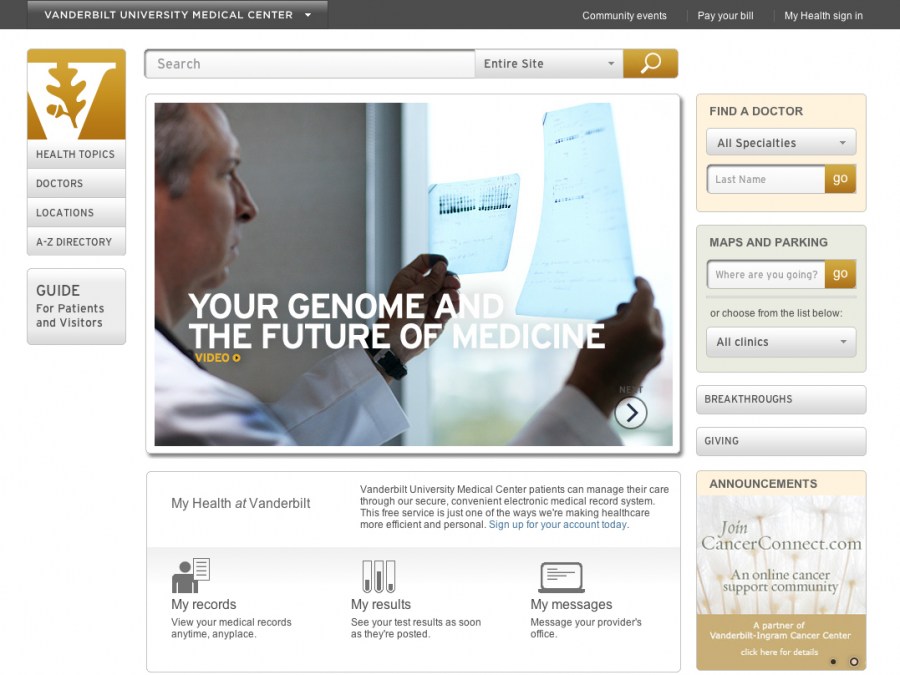
New website designed with VUMC’s patients, caregivers in mind
Vanderbilt University Medical Center’s website for its patients, caregivers and the public – VanderbiltHealth.com – has undergone a makeover, one that makes the site easier to use and more focused than ever before on the needs of users who are strapped for both time and attention.
It is the first major redesign of the site since its launch in 2007. The project uses “data-driven design,” which began with a close look at how the previous site was being used, as well as learning from consumers in focus groups, surveys and usability studies.
The redesign is more than a facelift – it reflects a larger strategy to develop a family of online properties with specific purposes for specific audiences and that all work together in a coordinated way, said Betsy Brandes, director of web development and creative services for VUMC.
“Research suggests we have 5 seconds, at most, to capture a user’s attention and get them where they want and need to go before they leave the site and look elsewhere,” Brandes said. “It is more important than ever before to design our online properties with the interests and needs of the user as the highest priority.”
The redesign offers streamlined content and features based on the most important tasks that visitors want to perform on the site, including easy searches for health care providers by specialty, name and location.
Information that patients and caregivers need to make decisions about where to receive their care, how to make an appointment, how to prepare for a visit or hospital stay and other details are easier to find.
Some features, such as a prominent search bar, will be familiar to users.
“We adapted features from popular sites such as Google or Facebook because we don’t want our users to have to learn something new,” Brandes said. “The goal is to make their experience with our site easy and helpful.”
Visitors may also notice that the site resembles a mobile application, which is also by design. Estimates are that by 2014, more people will access the Internet through smart phones and other mobile devices. The site is optimized for mobile viewing and use.
The new site integrates VUMC’s use of social media, recognizing the growing importance in meeting consumers where they are to provide information and connection. It also adopts a color palette and other design elements to align it with the overall Vanderbilt University visual identity.
In the coming months, the new design will be applied to the various clinic web pages that are part of VanderbiltHealth.com. Other online enhancements planned for this year include a new look for
MyHealthatVanderbilt.com, VUMC’s online patient portal, as well as a similar redesign of mc.Vanderbilt.edu (the website for VUMC’s research and educational enterprises and for faculty and staff).













